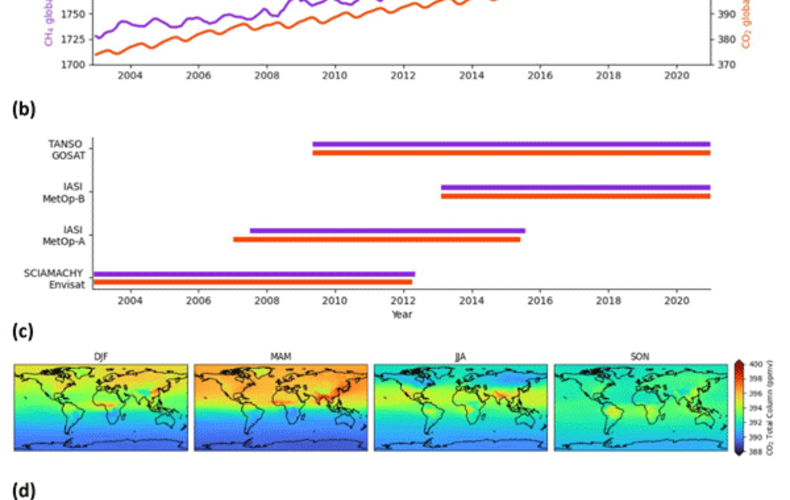
The Copernicus Atmosphere Monitoring Service (CAMS) has recently produced a greenhouse gas reanalysis (version egg4) that covers almost 2 decades from 2003 to 2020 and which will be extended in the future. This reanalysis dataset includes carbon dioxide (CO2) and methane (CH4). The reanalysis procedure combines model data with satellite data into a globally complete and consistent dataset using the European Centre for Medium-Range Weather Forecasts' Integrated Forecasting System (IFS). This dataset has been carefully evaluated against independent observations to ensure validity and to point out deficiencies to the user. The greenhouse gas reanalysis can be used to examine the impact of atmospheric greenhouse gas concentrations on climate change (such as global and regional climate radiative forcing), assess intercontinental transport, and serve as boundary conditions for regional simulations, among other applications and scientific uses. The caveats associated with changes in assimilated observations and fixed underlying emissions are highlighted, as is their impact on the estimation of trends and annual growth rates of these long-lived greenhouse gases.
Agustí-Panareda, A., Barré, J., Massart, S., Inness, A., Aben, I., Ades, M., Baier, B. C., Balsamo, G., Borsdorff, T., Bousserez, N., Boussetta, S., Buchwitz, M., Cantarello, L., Crevoisier, C., Engelen, R., Eskes, H., Flemming, J., Garrigues, S., Hasekamp, O., Huijnen, V., Jones, L., Kipling, Z., Langerock, B., McNorton, J., Meilhac, N., Noël, S., Parrington, M., Peuch, V.-H., Ramonet, M., Razinger, M., Reuter, M., Ribas, R., Suttie, M., Sweeney, C., Tarniewicz, J., and Wu, L.. Technical note: The CAMS greenhouse gas reanalysis from 2003 to 2020
Journal: Atmos. Chem. Phys., Volume: 23, Year: 2023, First page: 3829, Last page: 3859, doi: 10.5194/acp-23-3829-2023